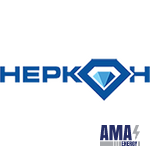S2 Picofox X-RAY Spectrometer
X-ray spectrometer S2 PICOFOX performs X-ray fluorescence analysis with total external reflection is a special energy-dispersive method, because it has a special geometry of the location of the excitation source and the fluorescent radiation detector. A narrow X-ray beam is incident on the substrate with the sample at a small angle (0.3 ° - 0.6 °) and is reflected by the surface under the effect of total external reflection. Using this principle allows to reduce the effects of scattering, as well as to locate the detector very close to the product, which in turn improves the efficiency of registration of fluorescent radiation. As a result, the sensitivity of the device will increase several times. The S2 PICOFOX spectrometer is an optimal tool for analyzing trace elements due to its low detection limits in the ppb and ppm ranges. The advantages of this method are obvious in the analysis of micro-quantities of samples, liquid samples with a high matrix content, as well as repeatedly changing types of samples. Thanks to its complete independence from any refrigerant, the spectrometer can be used for analysis not only in the laboratory, but also in the field.
Distinctive features
- Simultaneous multielement analysis from magnesium to uranium, including Cl, I, Br, Hg
- Non-destructive qualitative analysis of microsamples from ng to mcg
- Simple quantitative analysis without using external standard products
- Lack of matrix effects and memory effects
- For use, only an electrical connection is required (no gas required)
- Low cost analysis
Types of samples and sample preparation
| Liquids | Solid in-va (inorganic) | Solid Islands (biogenic) |
| Water: drinking, rain, river, sea and wastewater | Soils: bottom sediments and sediments, sewage sludge | Plant material: algae, leaves, root crops, hay, needles, wood, mosses, lichens |
| Body fluid: blood, serum, urine | Suspended particles: aerosols, dust, soot | Products: fish, meat, mushrooms, fruits, vegetables, nuts |
| Minerals: ores, rocks, silicates, silicon | ||
| Pure chemicals: acids, bases, solvents, water | Pigments: creams, inks, oil paints, powder | Tissues: hair, kidneys, liver, lung, nails |
| Metals: aluminum, iron, steel | ||
| Oils and crude oil: fuels, oils and lubricants, crude oil | Thin layers: impurities, films, foil, layers |
Various types of samples are presented for the analysis of X-ray diffraction by the air defense method, demonstrating a wide variety of applications. In X-ray diffraction analysis, samples should be placed on an X-ray reflecting substrate (sample holder). For this reason, the substrates are made of acrylic or quartz glass with a diameter of 30 mm. Liquid samples are applied directly to the sample holder with a quantity of several μl using a pipette and then dried in a desiccator or on an oven. For solid samples, there are several methods for sample preparation. Powder samples (suspensions, soils, minerals, pigments, nutrients, etc.) can be analyzed directly after application to the glass sample holder. Typically, a few micrograms of the material to be analyzed is taken with a cotton swab or lint-free tissue. Similarly, individual microprobe (particles, fragments, etc.) can be placed directly on the substrate.
Alternatively, powder samples can be prepared as a suspension with volatile solvents such as acetone or methanol, and then pipetted onto a support.
Analysis and calculation of concentrations
In general, using the S2 PICOFOX spectrometer, all elements from aluminum to uranium (except niobium, molybdenum and technetium) can be determined. For quantitative X-ray diffraction analysis of air defense, the internal standard method is used. Therefore, when determining the concentration, it is necessary to add an element that is not present in the sample. The whole process of quantitative analysis is described in the following steps:
- Measurement of the entire spectrum: the lines of all the elements being determined are measured simultaneously
- Evaluation of the measured spectrum: all detected elements should be marked for further quantitative procedures, which can be carried out manually or using software
- Peak extraction (spectrum deconvolution): based on the selected elements, the program performs peak extraction. Net intensities are calculated taking into account the overlap of lines, background factors, correction for the peak of losses, etc.
- Concentration calculation: element concentration is calculated using a simple formula
The advantages of X-ray fluorescence analysis with full external reflection compared to conventional X-ray fluorescence analysis are a noticeable increase in fluorescence yield, a significant weakening of the spectral background and, therefore, a significantly higher sensitivity to elements that are even in trace amounts.
The S2 PICOFOX spectrometer is a portable bench-top X-ray airborne spectrometer using an air-cooled low-power X-ray tube and a silicon drift detector that does not require liquid nitrogen cooling. A further increase in the sensitivity of this device is achieved through the use of x-ray tubes with higher brightness and detectors with a large core.
The S2 PICOFOX spectrometer is used as standard for solving analytical problems with normal detection limits and / or measurement time. In cases where higher sensitivity is required, a highly efficient module is used, which includes a microfocus x-ray tube and a large area detector.
Scope of the S2 PICOFOX spectrometer
- Ecology and environmental protection (water, aerosols, pollution)
- Medicine (biofluid analysis - blood, plasma, urine)
- Production and control of pure substances
- Food production
- Forensics (analysis of micro-objects and particles)
- Archeology, restoration
Specifications S2 PICOFOX
| Standard configuration | High performance module | |
| X-ray tube | Sharp focus | Microfocus |
| spot size | 1 x 1 mm | 50 x 50 microns |
| Power | 50 W (max. 50 kV, 1 mA) | 37 W (max. 50 kV, 0.75 mA) |
| Monochrome Ator | Multilayer flat, 17.5 keV | Multilayer curved, 17.5 keV |
| Detector | XFIash® SDD 10 mm active zones; | SDD XFIash® e 30 mm 2 active zone |

